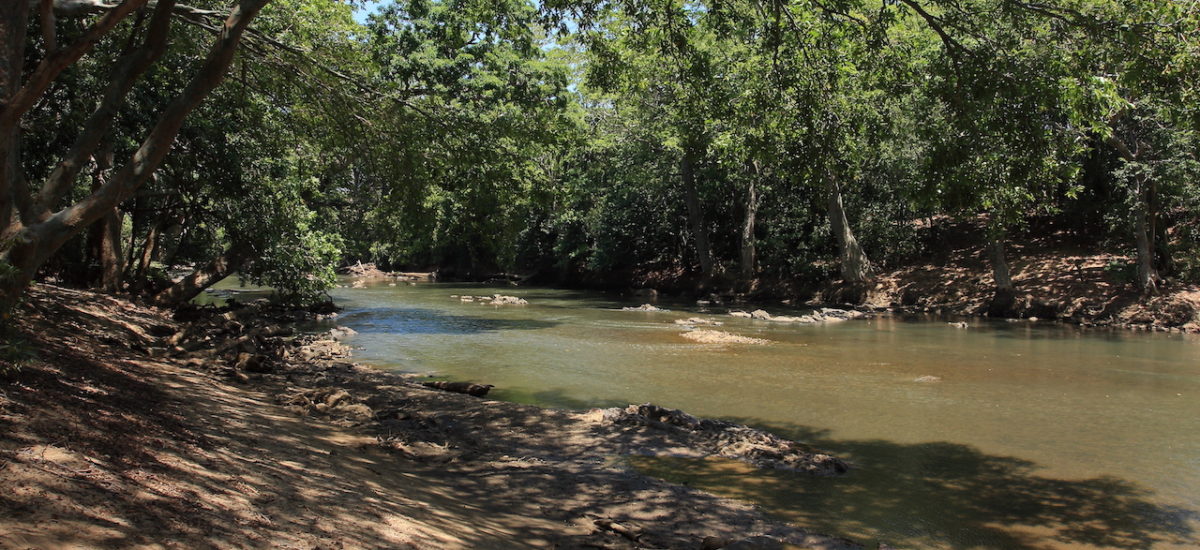Photo courtesy of Namal Kamalgoda
Today is World Water Day
World Water Day 2021, at the start of a critical decade for climate action and Sustainable Development Goals (SDGs), opens with an outcry by stakeholders about the impacts of ongoing rampant deforestation in sensitive catchments, including UNESCO heritage sites, sparking a national debate on catchment conservation and water security. Why is the debate on catchments so important now?
In Sri Lanka, World Water Day always carries a reference to the famous statement by King Parakramabahu, “Let not a drop of water to go to the sea without being made use for mankind”. With this pious tokenism, the country reverts to its usual daily struggles related to water – rampant deforestation, degradation of catchments, sedimentation of reservoirs, faecal pollution in streams and rivers, depletion of groundwater, sand mining and bank collapse, damage to sensitive ecosystems, filling in of wetlands, incursions into UNESCO heritage sites, farmer protests for irrigation water, schools lacking water and sanitation facilities, a bureaucracy trammelled by red tape and harassed politicians badgered by voters clamouring for water for all purposes. The situation was exacerbated in the latter part of the 20th century by climate change related impacts where extreme weather events caused floods and droughts, with landslide warnings following high intensity rains becoming the norm.
Sri Lanka is internationally recognised for its hydraulic civilization and its glorious contribution to irrigation technology. The irrigation centric development activities fostered by the state and individuals in ancient Sri Lanka recognised the principle of coexistence between man and nature. Irrigation management was a harmonious collaboration between state and community. Ancient irrigation systems, which provided the main source of livelihood for the people, were built for the benefit of the country and also out of compassion for all living creatures.
King Parakramabahu and other great tank builders who created the glories of multifunctional water resource development systems were conscious of the importance of maintaining pure catchments and forests, the country’s water towers on which depended the flow of water for the entire hydraulic civilization. It is this very catchment that is now being fought about, bargained over and lost to degradation in 2021.
Until the middle of the last century, water security was not seen as a major issue although there were periodic droughts. There was a general sense that water was available in plenty; it needed control so the emphasis was on the development of suitable infrastructure. In 2020 there was a decline of water and climate action, overtaken by the more urgent needs of the COVID-19 pandemic. Although there is a global emphasis on water for handwashing for safety, it clashes with the grassroots reality that water is inaccessible for many communities.
In a dominantly surface water dependent country such as Sri Lanka, proper catchment conservation is the most viable means to ensure a steady supply of water. Catchment conservation is pivotal in building resilience to increasing hydro-meteorological hazards (cyclones and super storms) with climate change. The water challenge of the 21st century is to deal with ever increasing climate change fuelled water scarcity, ageing infrastructure, a fragmented management systems and unmet need for integrated water management mechanisms for development. The world watched a looming Day Zero situation in Cape Town in 2018 and the successful public response fighting and averting it; what if Day Zero water levels were to come in Sri Lanka? Is the community, the agency and the state prepared for such an eventuality?
While the water demand is steadily increasing in Sri Lanka, it’s surprising that some water sources and flows are being degraded, neglected and eventually lost. Many springs that were perennial community water sources in upcountry areas used for domestic, agricultural and livestock needs have vanished. The dug wells that were the primary source in most peri-urban areas have been filled up due to space restrictions and are polluted due to proximity of cesspits. Households are therefore becoming entirely dependent on water supply schemes that are already stressed due to poor catchment management.
It is imperative to resuscitate traditional sources and flows as insurance against climate variability. Wells are being abandoned and filled in when piped water supply comes in. Protecting the existent household and community dug wells, restoring communal springs and small streams is important in a future scenario where each and every water source becomes precious. India has a spring rejuvenation initiative that could be a best practice to follow.
In view of rapid onset of climate change, there is a need for community awareness and advocacy related to water management, especially for women and youth who are catalysts of community level change. In particular this activity has to focus on the most sensitive catchments in the highlands.
Women and youth can also be the pioneers of community science initiatives, providing more outreach for water professionals at community level and also contribute to technical and scientific aspects of water management in a creative and adaptive approach.
In view of declining state funding for capacity building in the water sector, multi partner initiatives are essential for supporting potential changemakers, especially youth and women water leaders, strengthening their involvement in building community water security. A consortium of cross sectoral partner agencies can build an interface strengthening community access to agency staff as well as helping channel messages from the increasingly savvy community to the hydrocracy.
It is the water issue that is seen in the national media, both visual and print, as a demand, a challenge and a future threat. In confrontations between policy makers and activists, forests and related ecosystems are seen as an urban based call to save obscure birds, insects and plants that have no economic value. What is not taken up strongly in the debates is that the ecosystems inhabited by these life forms are the critical water towers of the country, that the prime product of forests and catchments is water and that the loss of water security impacts on national security causing tensions in the social fabric.
The principles of integrated water resources management are based on the Dublin Rio Principles. Dublin Rio Principle Number 3 recognises the significant role played by women in the conservation and management of water. Sri Lanka is lacking in gender desegregated planning and female focused programmes in the water sector. Women play a significant but mostly invisible role in the water sector, in water supply and sanitation, ecosystem management, irrigation and irrigated agriculture. This has become increasingly apparent since the female population at 52.8 percent now outnumbers males and with female-headed households rising to 23 percent. As such, women disproportionately bear the brunt of the costs related to water insecurity; women’s productivity potential is constrained due to limited access to and involvement in decision making related to water.
In the current debate on impact of deforestation, a significant role is played by girls and women in profiling issues related to water security. Nevertheless women leaders at community level have little time or opportunities to expand their knowledge, take part in capacity development activities and develop essential skills especially in view of climate change related impacts and repeated disasters. Often their gender limits access to capacity building activities or activities that support their specific needs are not available.
Sri Lanka’s ancient hydraulic civilization recognised the roles and responsibilities of both state and community. The Mahavamsa enunciates the principle of common property resources, equity of access and state trusteeship as follows: “O great King, the birds of the air and the beasts have as equal a right to move and move about in any part of the land as thou. The land belongs to the people and all living beings; thou art only the guardian of it”. This was in 223 BC and this vision statement is very valid for 2021.
Sri Lanka has excellent policies on all aspects of water management although some may need to be updated to fit the current context. Operationalising these policies is the problem.
New champions need to rise from the state, academia and the community for ensuring Sri Lanka’s future water security. Every drop matters!


